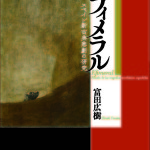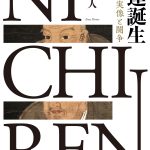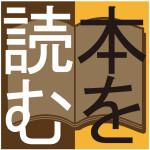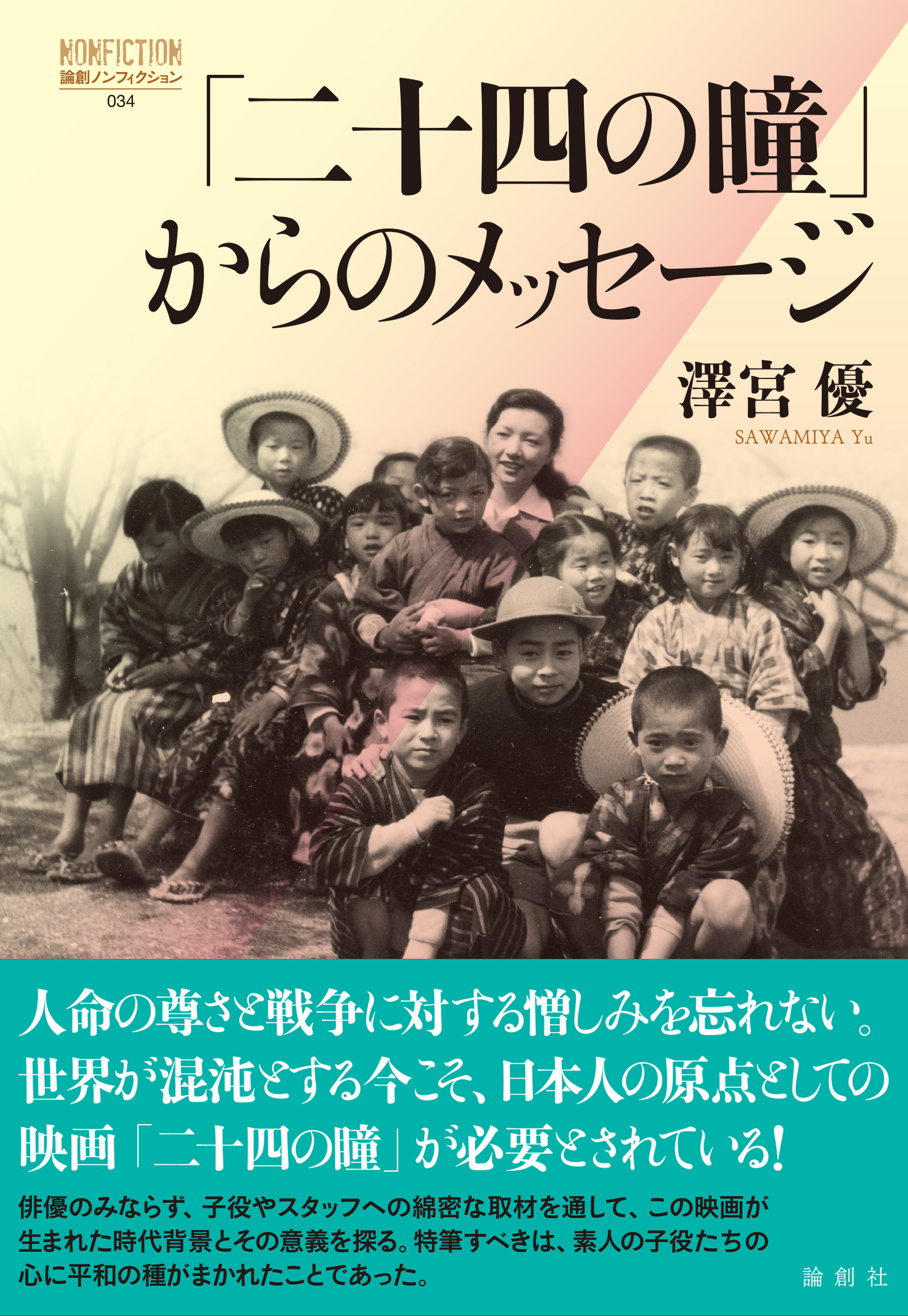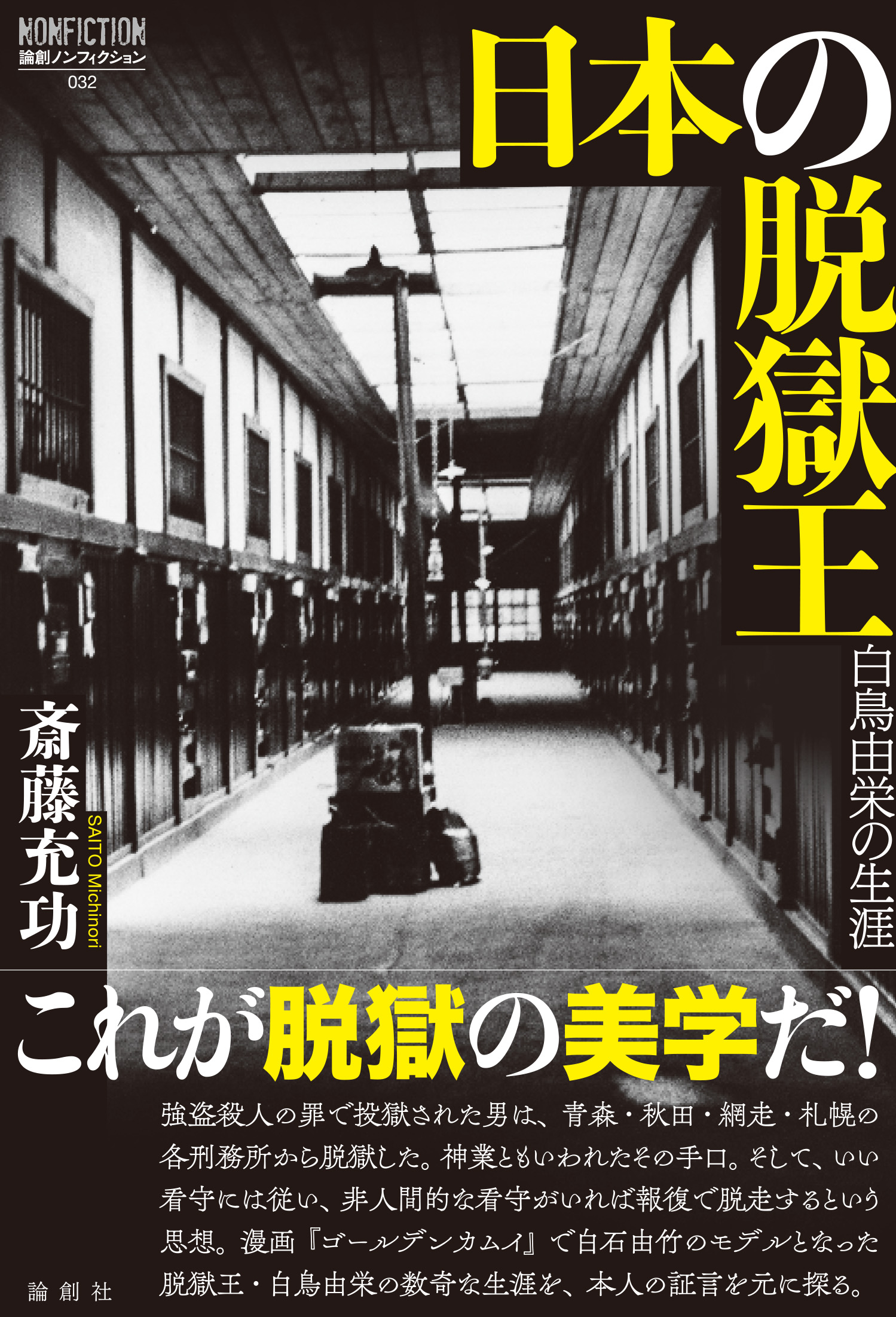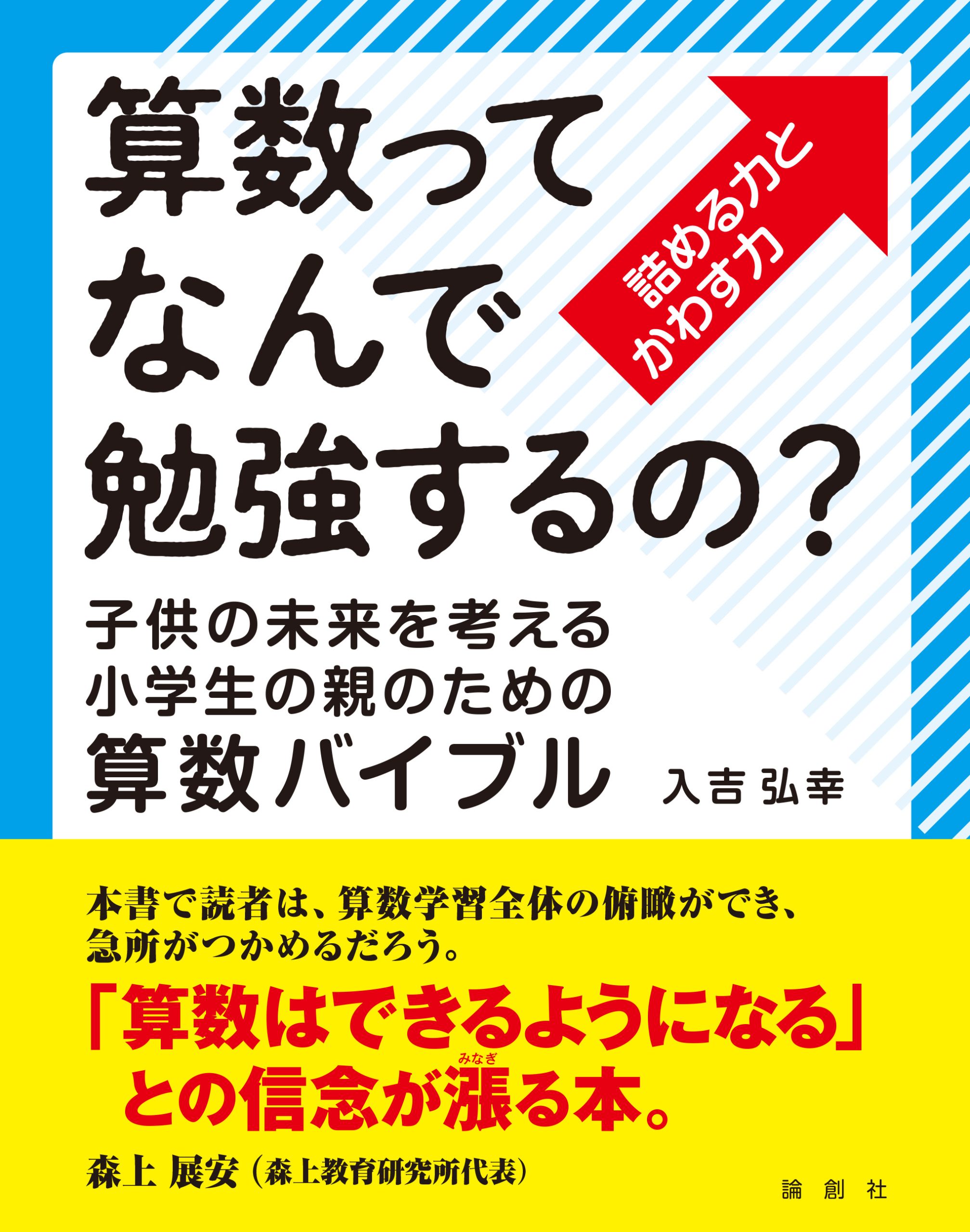- 2020-6-1
- お知らせ, 論創通信, The Nichiren Buddhism【ミステリーな日蓮 英訳版】
Politics and Doctrine of Nichiren Buddhism#003
Hiroto Ema
Chapter 1
Political position of Nichiren sect
2.Position of Nagoe clan and the sect
Since the reign of Hōjō Yoshitoki, there were three major threats for Hōjō tribe. The first is the house of shogun which started from Minamoto no Yoritomo. The second is the group of important vassals, and the third is Nagoe clan, which continued to oppose the head family while belonging to Hōjō tribe. The head family of Hōjō tribe succeeded to eliminate the first two threats before Nichiren’s days, but the threat posed by Nagoe clan remained(14). Then, why did Nagoe clan, also a member of Hōjō tribe, become a threat to the head family?
The founder of Nagoe clan was Hōjō Tomotoki, the second son of Hōjō Yoshitoki. But Tomotoki was dissatisfied with the fact that the elder brother Yasutoki succeeded the position of regent. There is a theory that he despised Yasutoki and thought that he himself was the true successor. And the reason of it is said to be Yasutoki’s birth(15). The mother of Tomotoki was Hime-no-mai, who came from the prestigious Hiki clan. On the other hand, the mother of Yasutoki was unknown and Yoshitoki, the father of them, preferred Tomotoki to Yasutoki. For Yasutoki, the lineage is the only ground for succeeding the position of regent. So it is natural that the presence of Nagoe clan, which openly expressed that they were the true successor, became a threat to the head family.
In 1246, when Hōjō Tokiyori, a grandson of Yasutoki, assumed the position of regent, Nagoe Mitsutoki, the first son of Tomotoki, said “I am a legitimate grandson of Yoshitoki. But Tokiyori is an illegitimate great grandson of Yoshitoki”, and with the former shogun Fujiwara no Yoritsune plotted a coup. And it should be noted here that Mitsutoki got many sympathizers. The members of the supreme decision-making body such as Gotō clan, Chiba clan, and Miyoshi clan joined up with the force of Mitsutoki, and many powerful vassals such as Miura clan, which is the most powerful in Sagami country, threatened to rebel against the shogunate led by Tokiyori. Though in the end the coup failed, Tokiyori immediately destroyed Miura clan in the battle of Hōji. So it could be easily understood how the threat posed mainly by Nagoe clan was imminent for the head family of Hōjō tribe.
Furthermore, in 1256, immediately after Tokiyori retired, the position of regent and Rensho (the assistant to the regent), became musical chairs, and Nagoe clan was enclosed within it(See Pedigree). By this kind of transfer of power, the foundations of the despotism by the head family of Hōjō tribe were built gradually, and as a result of “the February riot” of 1272, which run Nagoe clan into decline, the domestic threat to the head family disappeared. So the first half of Nichiren’s days coincided with the fierce rivalry among Hōjō tribe, of which Nagoe clan positioned in the center.
On the other hand, as for the early disciples of Nichiren, as I have pointed out above, some of their ancestors seems to have been given important posts by the shogunate, but later assassinated or alienated by the head family of Hōjō tribe. And the sect of Nichiren expanded around their relatives. So apart from the aspect of doctrine, the structure of the sect itself showed an anti-Hōjō sentiment. In fact, Nichiren pointed out the existence of Gokurakuji Shigetoki (Hōjō Shigetoki) behind an oppression by Tōjō Kagenobu, which occurred in 1253 in Awa country. Why should Shigetoki, who as the Rensho standed next to the regent, oppress Nichiren, who was so far from Kamakura and had few followers shortly after establishing his sect? This question should be considered with the relationship between the sect and Nagoe clan.
Though Shigetoki was the next younger brother of Tomotoki, he was repeatedly given important posts by the head family. It is because Yasutoki, the regent, aimed to ally with Shigetoki to check Tomotoki. Thus, the first and third son allied to check the second. Afterwards, Gokurakuji clan, whose founder was Shigetoki, prospered from the coalition with the head family for the containment of Nagoe clan. By the way, if Nichiren had had a close relationship with Nagoe clan, Shigetoki should have seen the expansion of Nichiren’s missions as the reinforcement of the power of Nagoe clan. So it would be natural that Shigetoki watched for its movement from early stage. As Syoji Kawazoe points out, the oppression of Nichiren in Kamakura was a result of the confrontation in Awa country(16).
Here, we would like to step a little further and discuss the relationship between Nichiren and Nagoe clan. Hiroo Satō argues “Ryōke-no-ama (the landlady nun)”, from whom Nichiren and his parents got a lot of favor in his childhood, might have been the landlady of Tōjō-no-Mikuriya(17). This opinion seems reasonable, and the landlady mentioned here might have been a member of Nagoe clan.
“Nagoe-no-ama (the nun of Nagoe)”, who is known to be a sponsor of Nichiren and thought to have a relationship with the wife of Nagoe Tomotoki, left Nichiren during the oppression of 1271 and “the February riot” that followed. In 1253, in countering extortion of the land by Tōjō Kagenobu, the land steward, Nichiren joined with Ryōke-no-ama and led the lawsuit. The extortion occurred when the power of Nagoe clan was diminishing as a result of the transportation of Mitsutoki. So, for Shigetoki, this gave a good opportunity for oppressing them.
The lawsuit was judged at the court, and Nichiren got a favorable ruling at an exceptionally short period. He made a boast of this fact as the grace of the faith in Lotus Sutra(18). Later, when Shijō Kingo was oppressed by a slander, Nichiren drafted for him a letter of complaint, and prepared for a lawsuit by ordering Toki Jōnin and Daigaku Saburō (Hiki Yoshimoto) to make a fair copy of the draft(19). And also in this lawsuit, the same human network should have been used. Though Nichiren hadn’t moved to Kamakura yet, there were able disciples in Simousa country, such as Toki, who was a private officer of Chiba clan, and Ōta Jōmyō, who is said to have dealt with the court, and it seems that they could get the support of Chiba clan.
As Takashi Nakao has pointed out, Chiba Tanesada (1288-1336), the tenth master of the house, preserved the ashes of Nagoe clan along with those of Munetane, who was Tanesada’s father and the ninth master of the house(20). This fact shows the deep relationship between Chiba clan and Nagoe clan. Furthermore, in 1276 when Munetane was a child, he was presented a Mandala Gohonzon from Nichiren at the first anniversary of his father Yoritane’s death. On the other hand, Tanesada made his son a disciple of Nichiren sect. These facts suggest the strong relationship between Chiba clan and Nichiren since the era of Yoritane (1239-75). In fact, Yagi Taneie, to whom Nichiren gave “On Establishing the Correct Teaching for the peace of the Land”, is said to have performed an important role as the guardian of Yoritane(21).
After Ryōke-no-ama won the lawsuit, she constructed a house near the residence of Nagoe clan in Kamakura, and offered Nichiren a stronghold. This event might have to do with the relationship between Chiba clan, Nagoe clan, and Nichiren as well.
Note
(14) Syoji Kawazoe points out that the political situation after the battle of Hōji became a problem which Hōjō Tokimune should have solved, and ultimately it was settled by the February riot.(Hōjō Tokimune, ed. Nihon Rekishi Gakkai, Yoshikawa Kōbun Kan, 2001, pp. 16)
(15) Takayuki Okutomi. Kamakura Hōjō ichizoku, Shin Jinbutsu Ōraisya, 1983, pp. 120; Shigeo Hosokawa. Kamakura seiken tokusō sensei ron, Yoshikawa Kōbun kan, 1999, pp. 31.
(16) Syoji Kawazoe. “Nichiren no syūkyō no seiritsu oyobi seikaku.” Shien 66, Jan. 1956. pp. 66.
(17) Hiroo Satō. Nichiren, Minerva syobō, 2003, pp. 7.
(18) “Seichō-ji daishū chū: Letter to the Priests of Seichō-ji.” ed. Rissyō University, op. cit., pp. 1135.
(19) “Shijō Kingo dono gohenji: A Warning against Begrudging One’s Fief.” ed. Rissyō University, op. cit. pp. 1363.
(20) Akira Nakao. Nichirensyū no seiritsu to tenkai, Yoshikawa Kōbun Kan, 1973, pp. 12, 113.
(21)Akira Nakao. Nichiren, Yoshikawa Kōbun Kan, 2001, pp. 94.
June 1st 2020
Please let us know your feedback via e-mail.
(Next section will be released on July 1st)
Back Number→The Nichiren Buddhism
ミステリーな日蓮 〈番外編〉「日蓮と政治」#003
江間浩人
第1章 日蓮教団の政治的立場
2.名越家と教団の立場
北条義時以来、得宗家にとって主に三つの脅威が存在した。一つは頼朝の血をひく将軍家であり、二つには頼朝以来の有力御家人であり、三つには同じ北条一門にありながら常に得宗家に対峙し続ける名越家である。北条得宗家は、日蓮の活動期までに前二者の排除には成功したが、名越家の脅威は残存していた(14)。なぜ同じ北条一門の名越家が得宗家の脅威となったのか。
名越家の祖は、北条義時の次男・朝時である。ところが朝時は、兄の泰時が執権職を継いだことに当初から不満をもっていた。朝時には泰時を見下す「我こそ嫡流なり」との強い意識があり、その原因を泰時の出自に求める説も提示されている(15)。朝時の生母は名門比企家の姫ノ舞である。一方、泰時の生母は不明で、父・義時は泰時よりも次男の朝時を厚遇していた。泰時にとって血筋こそが執権継承の拠り所である。にもかかわらず、それに対して公然と嫡流意識を表明する名越家の存在が脅威となったのは当然である。
1246年(寛元4)、泰時の孫である時頼が執権職に就くと、朝時の嫡男である名越光時は「我は義時が孫なり。時頼は義時が彦なり」と述べ、前将軍であった頼経を担いでクーデターを謀る(宮騒動)。ここで特筆すべきは、光時への同調者が多数にのぼったことである。評定衆から後藤氏、千葉氏、三善氏らが光時方に加わり、さらに相模国最大の豪族であった三浦氏など多数の有力御家人が時頼から離反する構えをみせた。結局、このクーデターは失敗に終わる。しかし時頼は間髪を入れず三浦氏を滅ぼす(宝治合戦)。得宗家にとって名越家を中軸とする勢力の脅威が、いかに切迫したものであったか推察されよう。
さらに1256年(康元1)、時頼が執権職を退くと、執権とそれを補佐する連署の職は、名越家を包囲する形で目まぐるしく動き始める(系図参照)。このたらい回しともいえる権力の委譲によって、得宗専制への基盤が整えられていき、1272年(文永9)の二月騒動で名越家を凋落させ、国内における得宗家の脅威は消滅する。日蓮の前期(1253-71)は、まさに名越家をめぐる北条一門の熾烈な抗争の渦中にあったのである。
一方、日蓮の初期の門下に目を転じると、先にも指摘した通り、名越家と同じく将軍家に重用されながらその後、得宗家に謀殺ないし疎まれた御家人の血を引くと推定されるものが存在する。そしてこれらの血縁を軸に教団の教勢は拡大した。教説の問題以前に、教団の構成は反得宗の色彩が濃いものだったのである。日蓮はすでに1253年(建長5)の安房における東条景信による弾圧の背後に、極楽寺重時の存在を挙げている。執権に次ぐ連署の立場にいた重時が、鎌倉からほど遠く、しかも無勢に近い立教直後の日蓮を、なぜ弾圧する必要があったのか。これも名越家との関係に注意を払う必要があろう。
重時は朝時のすぐ下の弟であったが、常に得宗家から重用され続けた。執権泰時が朝時を抑えるために重時との連合を図ったからである。長男と三男が手を組んで次男を封じ込める。以後、重時を祖とする極楽寺家は、名越家に対する抑えとして得宗家との二人三脚によって栄華を極めていく。ところで、仮に日蓮が名越家と近しい存在であったとすれば、日蓮の教線の拡大が重時の目には名越勢力の伸張と映じたはずである。重時が、その動向を早い時期から警戒するのも当然であろう。川添氏が指摘する通り、安房での対決の延長線上に、鎌倉での日蓮弾圧がある(16)。
ここではさらに踏み込んで、日蓮と名越家との接点を考察したい。佐藤弘夫氏は、日蓮が幼少期に両親とともに御恩を被った「領家の尼」は、東条御厨の領家であろうとされるが首肯できる(17)。そしてその領家とは、名越家ではなかったか。
日蓮の檀那であったことで知られ、名越朝時の妻との伝承もある「名越の尼」は、1271年(文永8)の弾圧と続く二月騒動の時期に日蓮の元を去っており、それ以前からの門下であった。1253年(建長5)、地頭の東条景信による領地強奪に対抗して日蓮は「領家の尼」に加担して訴訟指揮を執る。この景信の領地強奪は、光時の配流によって名越家の力が衰えた時期と重なっている。重時が圧迫を加えるには好機だったといえよう。
訴訟は、問注所の裁断を仰ぐものだったが、異例の速さで領家勝訴に決したことを、日蓮は法華経信仰の験と誇る(18)。後に四条頼基が讒言によって弾圧を被った際、日蓮は訴状を下書きし、それを富木常忍や比企能本らに清書させて提訴の準備をしている(19)。領家訴訟も、同様の人的ネットワークの活用があったと思われる。当時、日蓮はまだ鎌倉に出る前だったが、千葉氏の被官だった富木、問注所との往還も指摘される太田など、下総にはそれにふさわしい人材が揃い、千葉氏の協力も得られたのではなかろうか。
すでに中尾尭氏が指摘しているが、千葉氏十代当主の胤貞(1288-1336)は、亡父の九代当主宗胤とともに名越氏の遺骨を保持しており(20)、千葉氏と名越氏の深い接点が伺える。さらに宗胤は、幼少時の1276年(建治2)には、父・八代当主頼胤の一周忌に当たり日蓮から曼荼羅を送られ、一方、胤貞は子息を日蓮の弟子としていることから、千葉氏は、頼胤(1239-75)の時代から続く日蓮との強い結びつきが想定される。実際、日蓮が立正安国論を与えた八木胤家は、頼胤の幼少時にその後見として重要な役割を果たしたという(21)。
領家方の勝訴後、鎌倉名越邸の至近の要所に草庵が用意され、日蓮に拠点を提供している。これも千葉氏、名越氏、日蓮の重縁によるものと考えられる。
注
(14)川添昭二氏は、宝治合戦以後の政情は時宗の解決すべき課題となっており、二月騒動で決着すると指摘された(日本歴史学会編集『「北条時宗』吉川弘文館、2001年、16頁)
(15)奥富敬之『鎌倉北条一族』(新人物往来社、1983年)120頁、細川重男『鎌倉政権得宗専制論』(吉川弘文館、1999年)31頁参照
(16)川添昭二「日蓮の宗教の成立及び性格」(『史淵』66、1956年1月)
(17)佐藤弘夫『日蓮』(ミネルヴァ書房、2003年)7頁
(18)「清澄寺大衆中」定本1135頁
(19)「四條金吾殿御返事」定本1363頁
(20)中尾堯『日蓮宗の成立と展開』(吉川弘文館、1973年)12、113頁
(21)中尾堯『日蓮』(吉川弘文館、2001年)94頁
—ご感想はお問い合わせメールまで(次回は7/1予定)—



